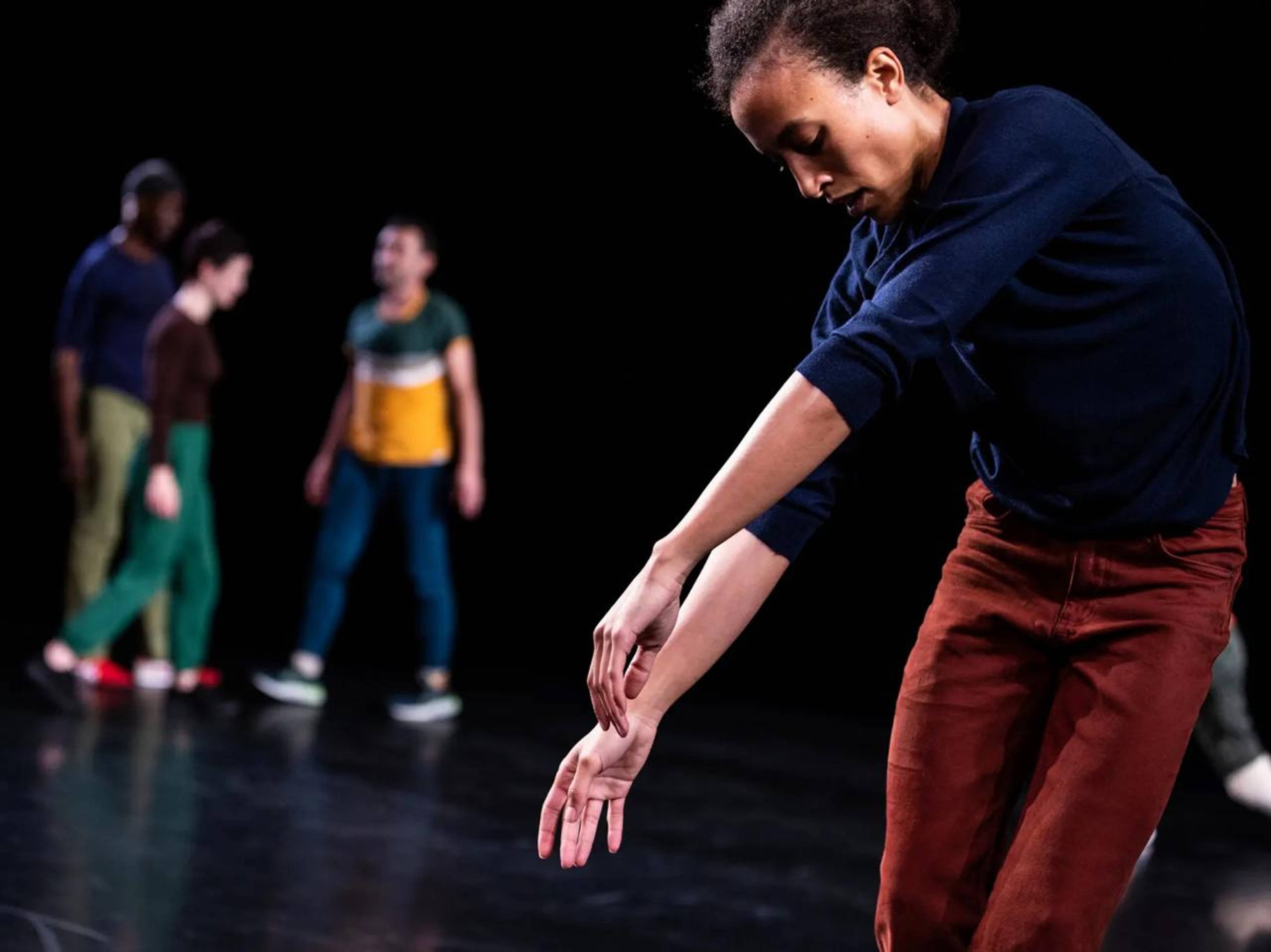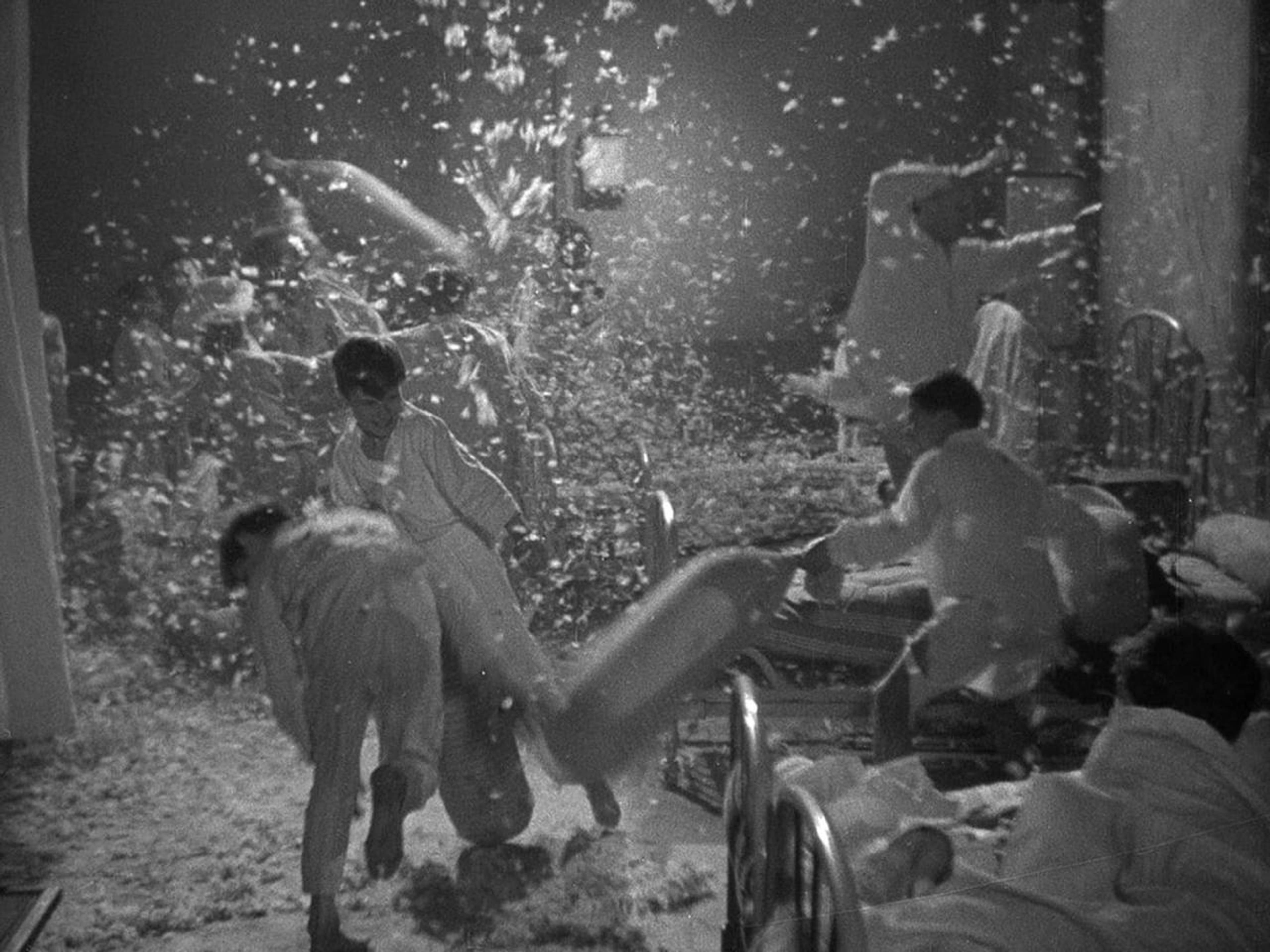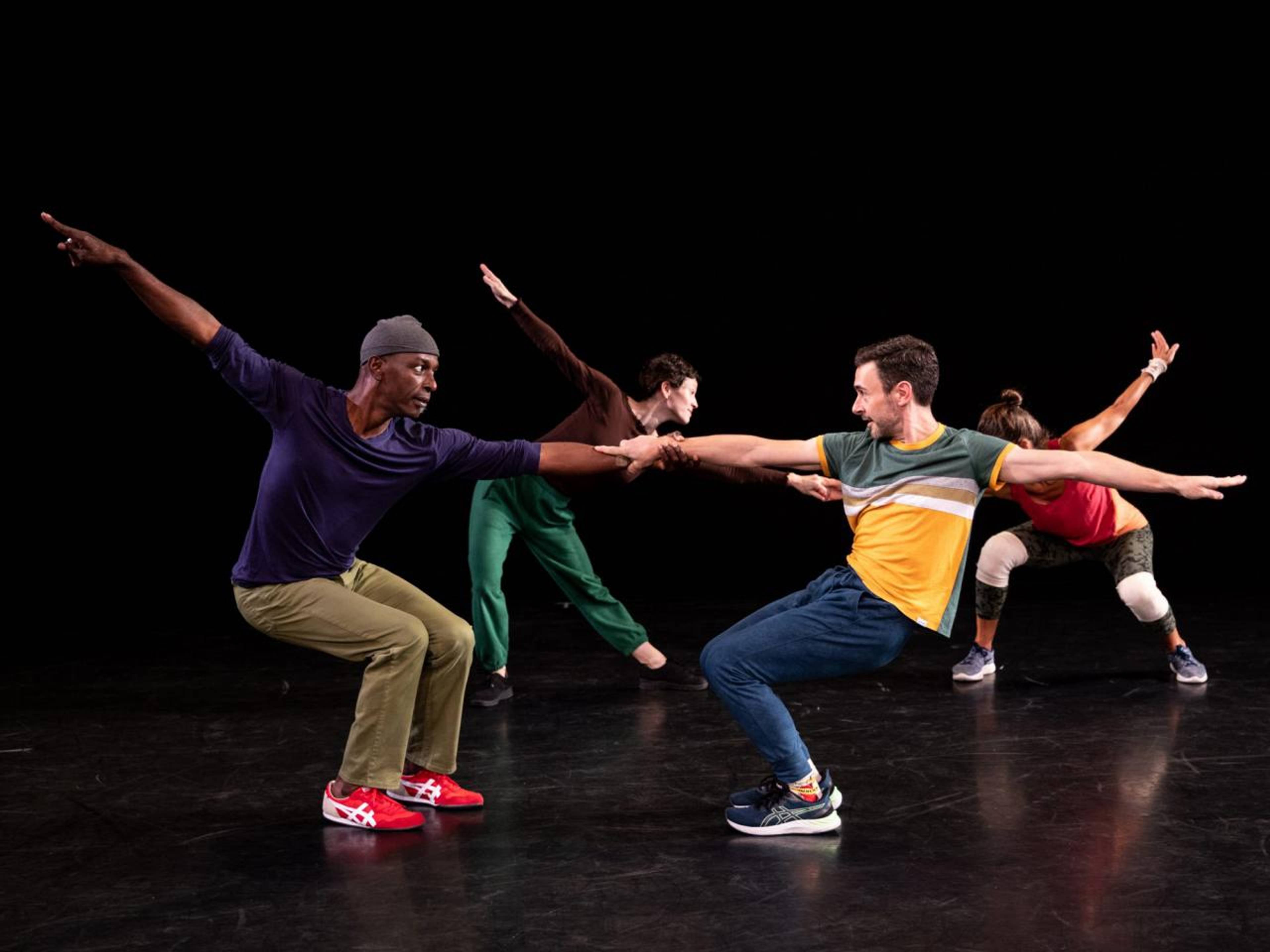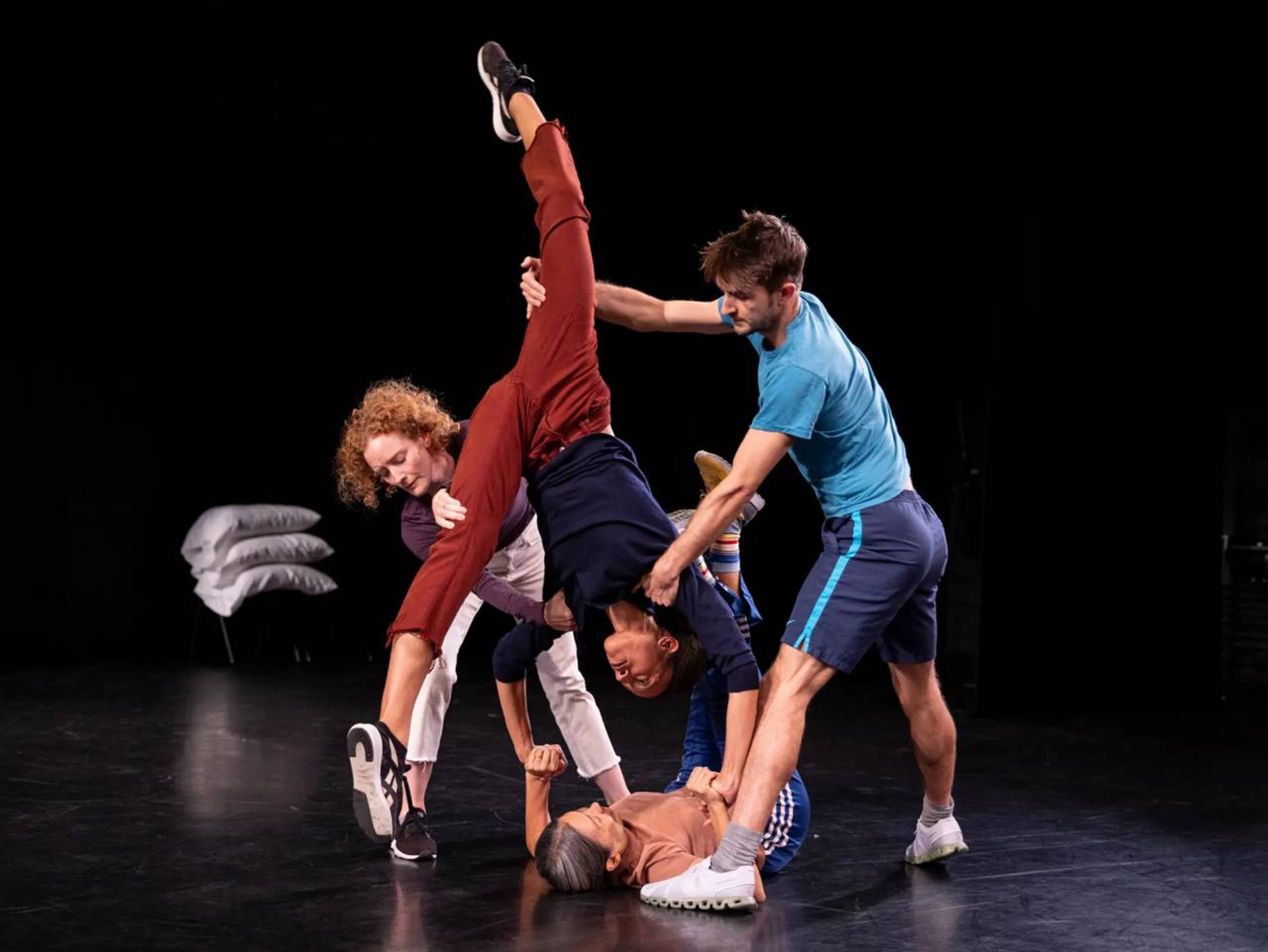In 1965, American choreographer Yvonne Rainer wrote her now notorious No Manifesto. Originally a tongue-in-cheek footnote to a longer essay, the statement became emblematic of post-modern dance, rejecting spectacle and virtuosity to instead celebrate “everyday” movement. Speaking last year with pre-eminent Black choreographer Bill T. Jones, however, Rainer, now eighty-seven, publicly “reconsidered” its principles. Jones stressed that Black bodies were often associated with the very “seduction” and “virtuosity” that her text denounced; consequently, it had inadvertently worked to exclude Black dancers – himself included – from post-modern dance. Their conversation came on the heels of Rainer’s announcement that, after sixty-one years of pioneering work, her “last dance,” HELLZAPOPPIN’: What about the bees? (2022), would address questions of racial injustice. While not at odds with her practice – often politically charged, exploring subjects from the desecration of the US flag to experiences of menopause – it suggested a corrective motivation and a desire to critically examine her legacy.
The European premiere at Kunsthalle Staaliche Baden-Baden began with Rainer’s After Many a Summer Dies the Swan: Hybrid (2002), a film that marked the artist’s transition from filmmaking back to dance after a thirty-year hiatus. Besides providing a poignant position from which to reflect on her career, After Many a Summer looks at entrenched societal structures and revolutionary changes within a fin-de-siècle European context, which could be read anew in Rainer’s examination of contemporary US racism.
Still from Henry C. Potter, Hellzapoppin’, 1941, HD video, 84 min
Following the credit roll, the performance itself started with the silent, side-by-side projection of two further cinematic excerpts. The jumps, flips, and skitters from the Lindy Hop interlude in the American musical comedy HELLZAPOPPIN’ (1941) and the pillow fight from Jean Vigo’s boarding-school rebellion Zero for Conduct (1933) created an atmosphere of jubilant dissent and provided the vocabulary for Rainer’s cast (in two groups of four) to draw from and build upon. Moreover, the films worked as a clear citation of sources, which helped Rainer to circumvent the appropriative and avoid creating what she called an “exploitative white hodge-podge.”
So what happens when post-modern dancers with no formal training in jitterbugging take up this historically Black dance form? Rather than mimic its movements, as performer Brittany Engel-Adams – herself a Black dancer initially skeptical of Rainer’s instruction – explained, the cast was “trying to make something else.” The performance elegantly stretches the two-minute sequence from its namesake film to half an hour, with the dancers helping one another navigate the form in slow, measured lifts. Their movement is not an aestheticizing reproduction, but a transmission – and transformation – that reveals interesting gaps and creates new social relations. The duet form, traditionally practiced by youthful male-female partners, is deconstructed and reconstructed as a contemporary and intergenerational group work.
Still from Jean Vigo, Zero for Conduct, 1933, black and white, 41 min
Layered atop the performance, a recorded voiceover describes Jane – a cipher for Yvonne – and her self-proclaimed position as “a permanently recovering racist.” The monologue is full of uncomfortable personal confessions, such as Jane’s addressing her Black colleague, whose name she has forgotten, with “How now, brown cow?” interspersed with New York Times headlines and extracts from critical race theory. While Rainer has narrated many of her own works, her words are here read by David Thomson, a Black member of the HELLZAPOPPIN’ cast, which has an unsettling effect.
In the post-performance Q&A, the performers acknowledged that the text’s overarching tone of white guilt is a “tired narrative.” That exhaustion, however, is dependent on context: Whereas the dance was coolly received at its New York premiere, the audience in Baden-Baden responded with jubilant applause, which curator Çağla Ilk attributed to cultural disparities between audiences, namely the level of scrutiny with which they address their whiteness. Moreover, this piece did not specifically ask this southern German audience for such reflection: HELLZAPOPPIN’ speaks to an American liberal elite, as evidenced by its narrator’s repeated reference of the New York Times as a favored “reputable source of news.” Rainer, a “self-proclaimed news addict,” has reproduced the newspaper’s headlines to deadpan effect throughout her career ( Assisted Living – Good Sports 2 [2014], MURDER and Murder [1966]), though their use in a performance engaging with racism, while ironic, at times feels a little naive.
“All problems take cooperation, patience, effort, and tolerance – the best metaphor for hope was watching the dancers learn [the dance].”
“But what about the bees?”
…interrupts lighting designer Les Dickert who storms on stage some 20 minutes in. He continues: What about Ukraine? The climate emergency? Overturning Roe v. Wade ? “Sit down, you can ask Yvonne later,” assistant director Pat Catterson responds. Breaking the fourth wall poses an interesting question about the responsibility of the artist: In a time of global polycrisis, how much can one performance satisfactorily address?
Rainer herself only offers further problems, stating in the Q&A, “I like to complicate things… I have no solutions.” HELLZAPOPPIN’ continues her investment in Susan Sontag’s “radical juxtaposition,” bringing together disparate sources to create propositions that both destabilize everyday norms and evade closure. The piece tos-and-fros between two groups, two films, voiceover, and movement. These synchronous pairings make it difficult to focus, much like the news cycle and the list of crises it amplifies. But rather than indulge in hopelessness, the work provides a nuanced strategy for engaging with the current climate. As Catterson explained: “All problems take cooperation, patience, effort, and tolerance – the best metaphor for hope was watching the dancers learn [the dance].”
Front: David Thomson and Vincent McCloskey; behind, Brittany Bailey and Patricia Hoffbauer in Yvonne Rainer, Hellzapoppin’: What About the Bees?, 2022, performance documentation, Staatliche Kunsthalle Baden-Baden
The end of HELLZAPOPPIN’ likewise reaches for hope, with Catterson reading an “expression of sexual intimacy” from James Joyce’s Ulysses (1922) , with the genders altered to communicate lesbian desire:
I put my arms around her yes and drew her down to me so she could feel my breasts all perfumed yes and her heart was going like mad and yes I said yes I will Yes .
Shaking her infamous association with the defiant “no,” in HELLZAPOPPIN’ , Rainer reconsiders her legacy in an affirmative mode, saying “yes” to cooperation, yes to desire, yes to hope.
From left to right: Emily Coates, Brittany Engel-Adams, Emmanuèle Phuon (on ground), and Timothy Ward in Yvonne Rainer, Hellzapoppin’: What About the Bees?, 2022, performance documentation, Staatliche Kunsthalle Baden-Baden
HELLZAPOPPIN’: What about the bees?
Staatliche Kunsthalle Baden-Baden
27 – 29 Jan 2023






